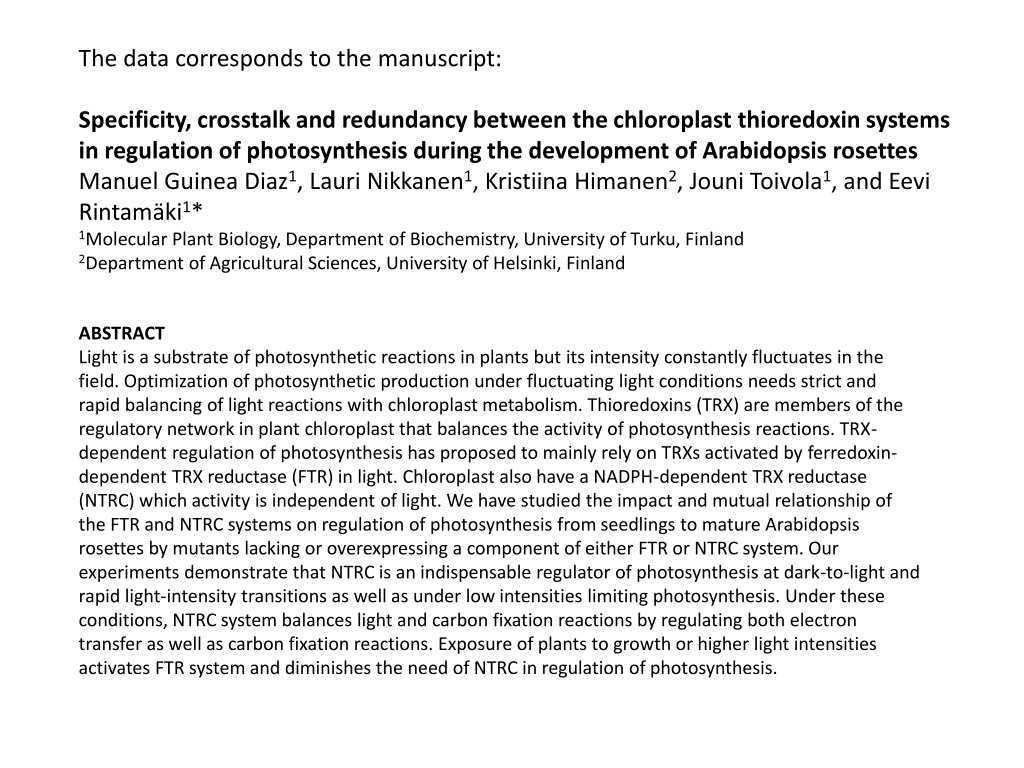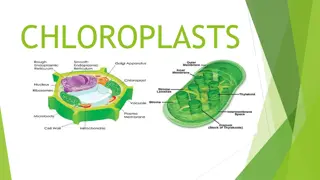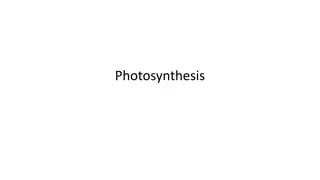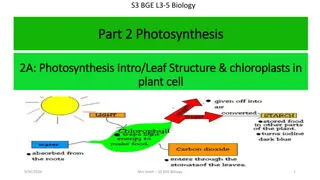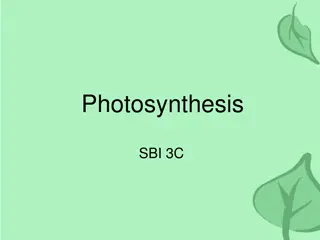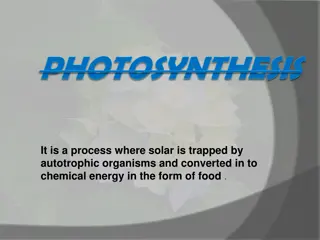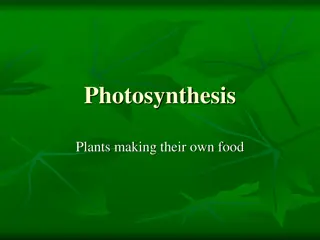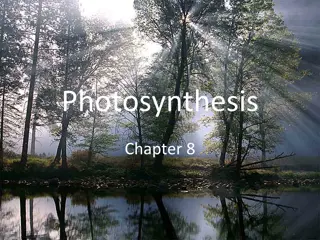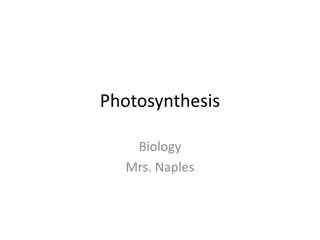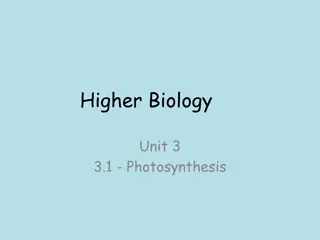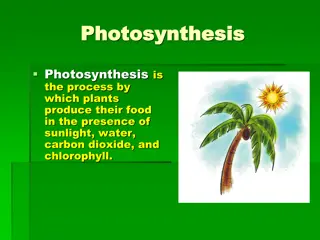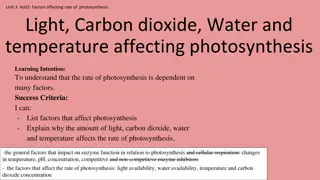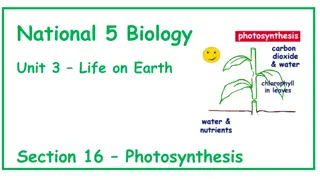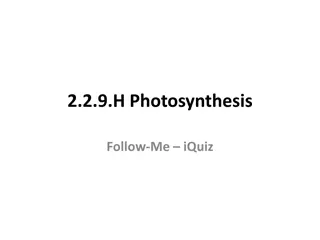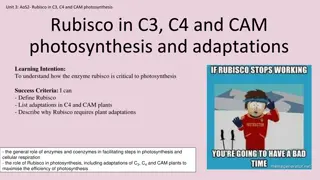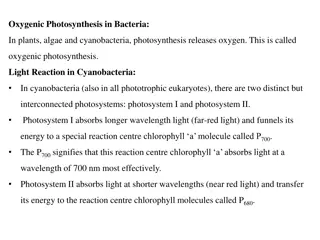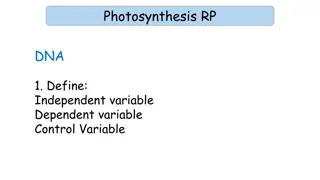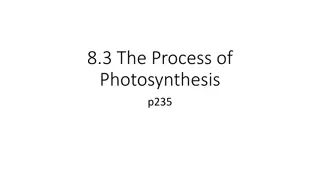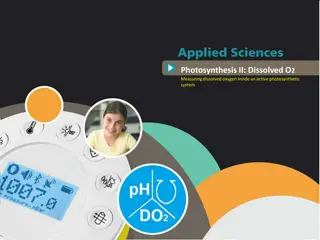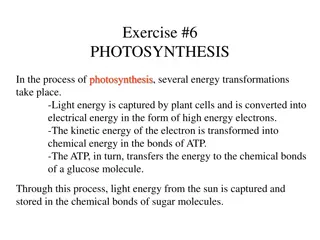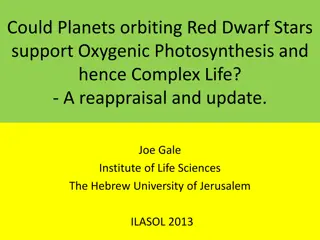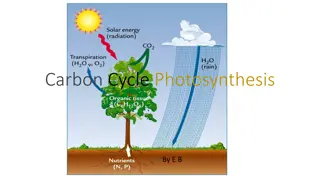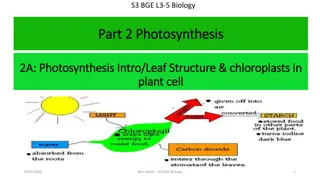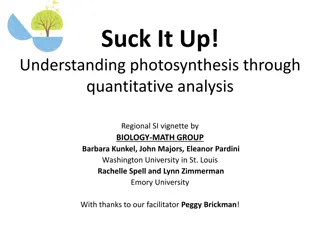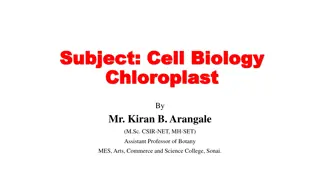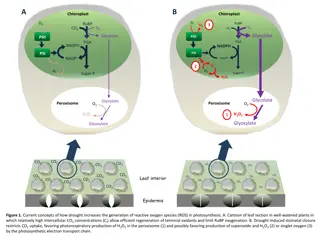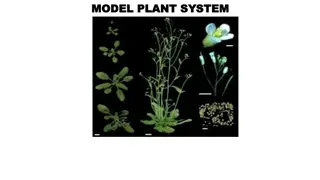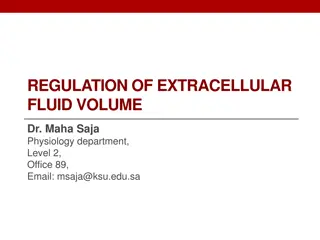Regulation of Photosynthesis in Arabidopsis Chloroplasts
Balancing photosynthesis with chloroplast metabolism is crucial for plant growth. Thioredoxins play a key role in regulating photosynthesis reactions in Arabidopsis chloroplasts. This study investigates the interplay between ferredoxin-dependent and NADPH-dependent thioredoxin systems in response to changing light conditions, highlighting the essential role of NTRC in optimizing photosynthetic production. Various Arabidopsis lines were analyzed, shedding light on the specificity, crosstalk, and redundancy of these regulatory systems during plant development.
- Regulation of Photosynthesis
- Arabidopsis Chloroplasts
- Thioredoxin Systems
- Light Reactions
- Plant Development
Download Presentation

Please find below an Image/Link to download the presentation.
The content on the website is provided AS IS for your information and personal use only. It may not be sold, licensed, or shared on other websites without obtaining consent from the author. Download presentation by click this link. If you encounter any issues during the download, it is possible that the publisher has removed the file from their server.
E N D
Presentation Transcript
The data corresponds to the manuscript: Specificity, crosstalk and redundancy between the chloroplast thioredoxin systems in regulation of photosynthesis during the development of Arabidopsis rosettes Manuel Guinea Diaz1, Lauri Nikkanen1, Kristiina Himanen2, Jouni Toivola1, and Eevi Rintam ki1* 1Molecular Plant Biology, Department of Biochemistry, University of Turku, Finland 2Department of Agricultural Sciences, University of Helsinki, Finland ABSTRACT Light is a substrate of photosynthetic reactions in plants but its intensity constantly fluctuates in the field. Optimization of photosynthetic production under fluctuating light conditions needs strict and rapid balancing of light reactions with chloroplast metabolism. Thioredoxins (TRX) are members of the regulatory network in plant chloroplast that balances the activity of photosynthesis reactions. TRX- dependent regulation of photosynthesis has proposed to mainly rely on TRXs activated by ferredoxin- dependent TRX reductase (FTR) in light. Chloroplast also have a NADPH-dependent TRX reductase (NTRC) which activity is independent of light. We have studied the impact and mutual relationship of the FTR and NTRC systems on regulation of photosynthesis from seedlings to mature Arabidopsis rosettes by mutants lacking or overexpressing a component of either FTR or NTRC system. Our experiments demonstrate that NTRC is an indispensable regulator of photosynthesis at dark-to-light and rapid light-intensity transitions as well as under low intensities limiting photosynthesis. Under these conditions, NTRC system balances light and carbon fixation reactions by regulating both electron transfer as well as carbon fixation reactions. Exposure of plants to growth or higher light intensities activates FTR system and diminishes the need of NTRC in regulation of photosynthesis.
The data corresponds to the photosynthetic characterization of several transgenic lines carried out at NaPPi (National Plant Phenotyping infrastructure in Helsinki) by using non-invasive chlorophyll a (Chla) fluorescence techniques. 1- ORGANIZATION OF THE DATA: The files are organized in: - Fluorescence files ( FC1 ) Fluorescence results obtained during the growth of the plants in short days conditions (for around 50-60 days)* - Photos of the plants ( RGB2 ) Photos of the plants taken during their growth in short day conditions. - Summary files Three different repetitions of the analysis were made, and every repetition has its own fluorescence (FC1) and photos (RGB2) dataset. The name given to each repetition are: LL1 LL2 LL3 *Fluorescence files can be analyzed with the program: FluorCam 7
2- LINES ANALYZED: 5 different Arabidopsis lines were analyzed: Col-0 (wt) control line. Represented with the color black in many of the graphs. ntrc mutant (ntrc) Knockout mutant for NTRC ( NADPH thioredoxin reductase C ). Represented with the color red in many of the graphs. ntrc mutant complemented with ntrc gene under the 35S promoter (OE-NTRC) ntrc mutant that overexpresses NTRC wt protein. Represented with the color green in many of the graphs. ntrc mutant complemented with a chimeric protein, where the TRXf sequence was fused with the sequence of the NTR domain of NTRC (OE-NTR-TRXf)- Represented with the cyan color in many of the graphs. ntrc mutant complemented with NTRC protein with an active NTR domain but an inactive TRX domain (NTRCSGPS) (OE-SGPS line)- Represented with the color purple in many of the graphs.
2- ANALYSIS PERFORMED: Two different light pulse protocols were applied during the growth of the plants: - Light Curve (LC) analysis plants were transferred after dark adaptation for 20 min to increasing light intensities (20, 50, 100, 200, 500, 700 and 800 mol of photons m-2s-1) and kept for one minute under each condition. A saturating pulse of 2000 mol of photons m-2s-1was applied at the end of illumination at each light intensity and chlorophyll a fluorescence was measured using FluorCam SN FC-800-195 Pulse Amplitude Modulated (PAM) system of Photon System Instruments (PSI, Czech Rep). - Quenching analysis (Q) - plants were dark adapted for 20 min and a saturating pulse of light was applied for the determination of Fv/Fm. Then, plants were illuminated with 50 mol of photons m-2s-1(low light, LL) with saturating pulses applied every 10 seconds. After 1 minute, the light intensity was increased to 800 mol of photons m-2s-1(high light, HL) for 1 minute with a saturating pulse every 10 seconds. The LL-HL cycle was repeated three times. After cessation of illumination saturating pulses were applied to determine quenching relaxation.
